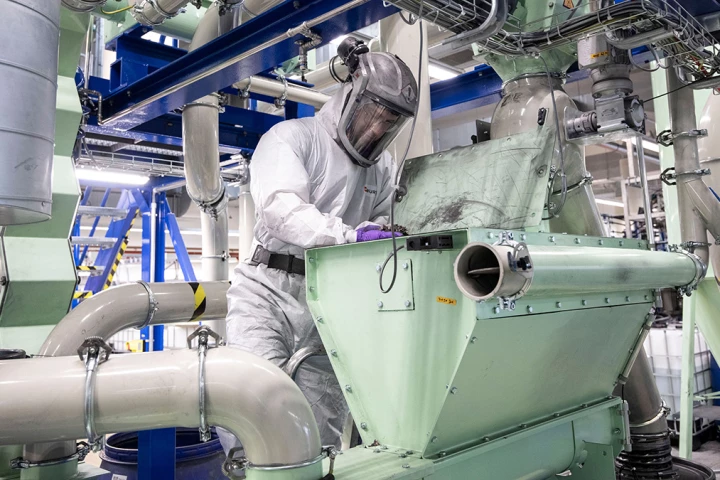Batteries
-
General Motors and LG Energy Solution have announced plans to put lithium manganese-rich (LMR) prismatic battery cells into production. The cells will be used in future full-sized trucks and SUVs as part of GM's Ultium platform.
-
It isn't easy to recycle high-voltage batteries from electric cars, but Porsche wants to take a stab at it. The plan: extract raw materials from old EV batteries to make fresh ones for its own electric models.
-
Researchers at Cornell University have been working on batteries that can 'flow' through the internal structures of robots, kind of like blood in humans' veins. They showcased this fascinating approach in soft-bodied worm and jellyfish bots.
-
In a potentially game-changing move for the EV industry, Stellantis and Zeta Energy Corp have teamed up to develop the next-generation EV battery with more range, more power, 50% faster charging, and at less than half the cost.
-
Monash University researchers' new lithium-sulfur battery tech delivers roughly twice the energy density of lithium-ion batteries, as well as speedy charging and discharging – enabling the sort of power delivery that's critical for eVTOL flight.
-
Lithium-ion batteries power everything from our vape pens to electric cars, but they have one glaring issue: they rely on lots of hard-to-harvest lithium. A new reactor from Rice University is set to make the whole process easier and safer.
-
The majority of our portable electronic gadgets, and the new wave of e-transportation, are powered by lithium batteries. Group1 has developed a more sustainable alternative, and has now launched the world's first 18650 potassium-ion battery.
-
Lithium is a finite resource, and the more we lock inside rechargeable batteries, the less we have to use. A new speedy method to free the element from such sources could be a game changer in terms of the material's availability.
-
With AI technology proliferating through every facet of our lives these days, Eatron Technologies and Syntiant have leveraged their collective expertise to create an AI-powered battery management system (BMS) to boost battery life.
-
A new heat-to-energy converter has reached a record efficiency of 44% – the average steam turbine manages about 35%, for comparison. This thermophotovoltaic cell is a major step on the way to sustainable, grid-scale renewable energy storage.
-
As we discovered in 2022, traditional bikes can be given a new lease of life with an ebike conversion kit. But the price can be steep. The London-based makers of the kit we tried has now launched a budget-friendly option called the Swytch Go.
-
Natron Energy fell a little behind schedule on production plans for its sodium batteries but officially commenced production of the rapid-charging, long-life lithium-free batteries this week, bringing to market an intriguing new storage alternative.
Load More











